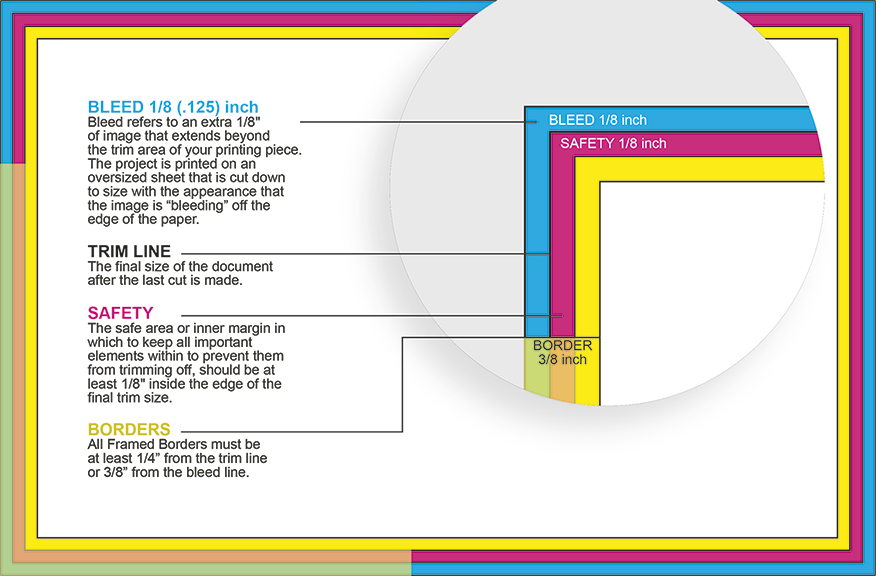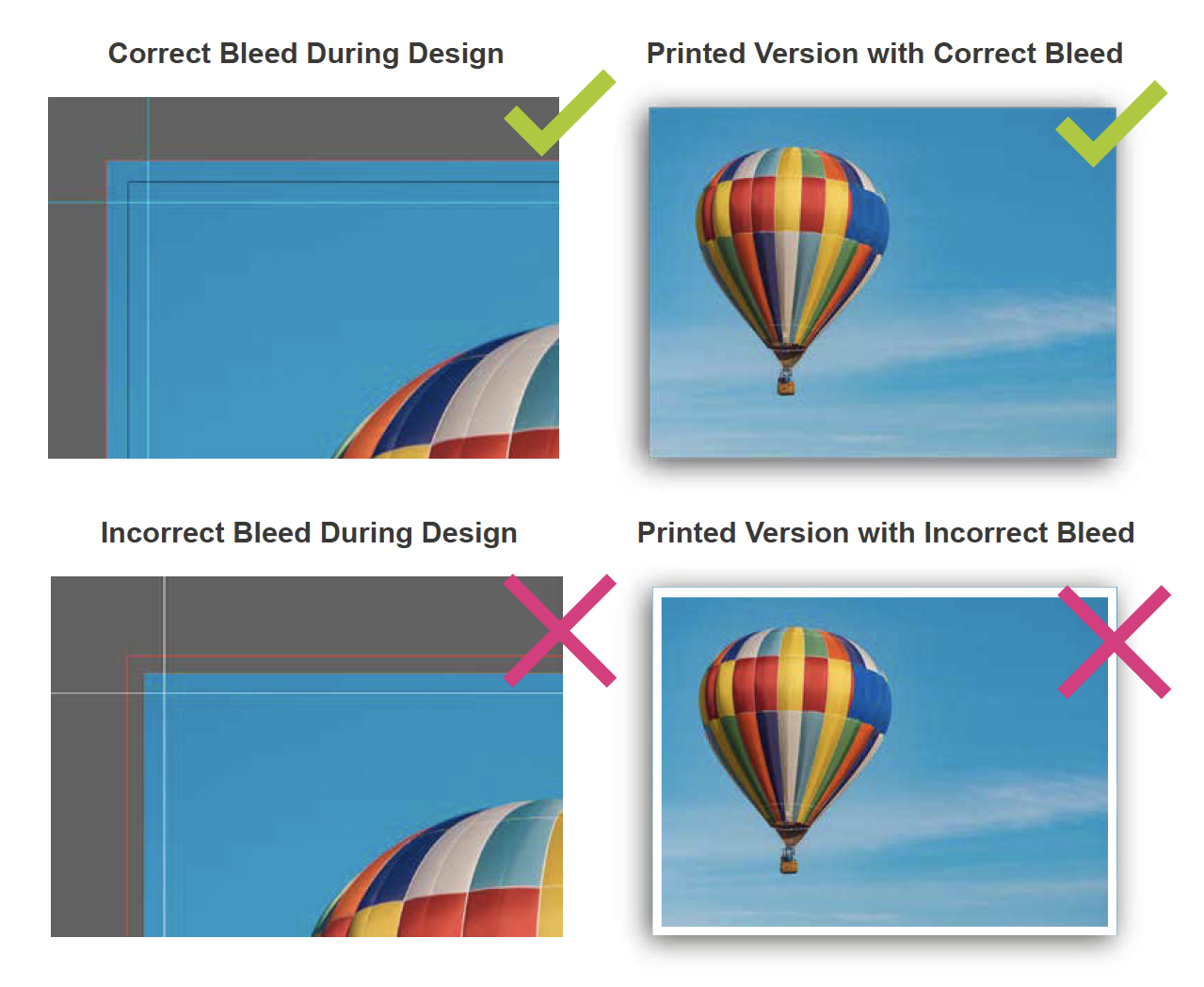If you’re new to the world of print, then you may not understand what full bleed printing is. To prevent your printed product from having unsightly white lines around the border, you must set your document up with bleeds. Bleed refers to an extra 1/8” (.125 in) of image or background color that extends beyond the trim area of your printing piece. The project is printed on an oversized sheet that is then cut down to size with the appearance that the image is “bleeding” off the edge of the paper.
It is best practice to set up your bleeds at the very beginning of your project so you don’t have to adjust at the end. There are a few extra terms you must understand along with bleed are trim, safety, and borders.
- Trim Line: The final size of the document after the last cut is made
- Safety: The safe area or inner margin in which to keep all important elements (such as logos and page numbers) within to prevent them from being trimmed off. This margin should be at least 1/8” inside the edge of the trim line.
- Borders: All Framed Borders must be at least ¼” from the trim line or 3/8” from the bleed line.

Full bleed printing is only possible when the project is printed on larger sheets, then trimmed down to size. Just like you can’t print up to the edge on your home printer, neither can we. Sometimes it’s easier for customers to understand the different terms and concepts associated with bleed if they see the trimming process. In the video below, you will see the trimmer pressing down on the stack of paper, then trimming. The amount of give a stack of paper has during this process adds up to a minute deviation either beyond or within the trim line.
This deviation is very small and is relatively simple to plan for during the designing process. Each design program addresses bleed differently, so we have put together some tips for the main programs we see.

- InDesign: InDesign is best suited for print. You can up set both bleed and margins in the “Document Setup” box when creating a new document. Simply bring your bleeds and margins up to 0.125 inches for top, bottom, inside, and outside. Your document will have visible lines for you upon creation.
- Illustrator: In the initial “Document Setup” window, set your bleeds to 0.125 inches for both top, bottom, inside, and outside. You cannot set up margins in Illustrator, so you will have to use guides once your document is open.
- Photoshop: This one is a little more tricky. You will have to add ¼ inch (.25) to your final document size in order for your photoshop document to account for bleed. For example, if your document is 8.5” x 11” then you will need to set the document up in Photoshop to be 8.75” x 11.25”. The edge of your page will be where you need to extend all bleeding images and graphics to. You can use the rulers to create guides for your trim and safety margins.
- Publisher: Publisher is pretty similar to Photoshop when it comes to bleeds. To set your document up to bleed, simply add .25” to your document size in the Page Setup window.
- Word: Unfortunately, you cannot set up a full bleeding document in Word.



